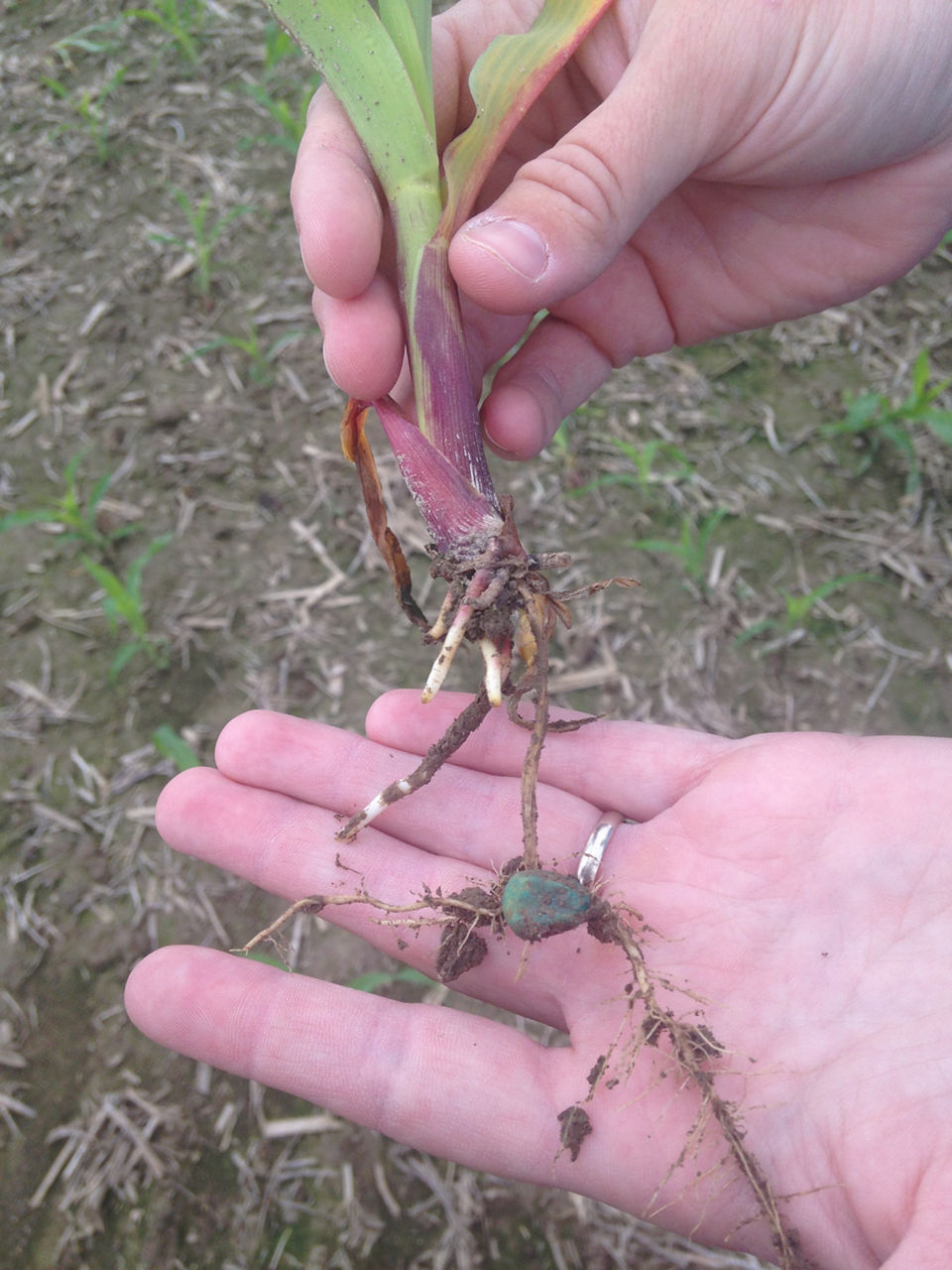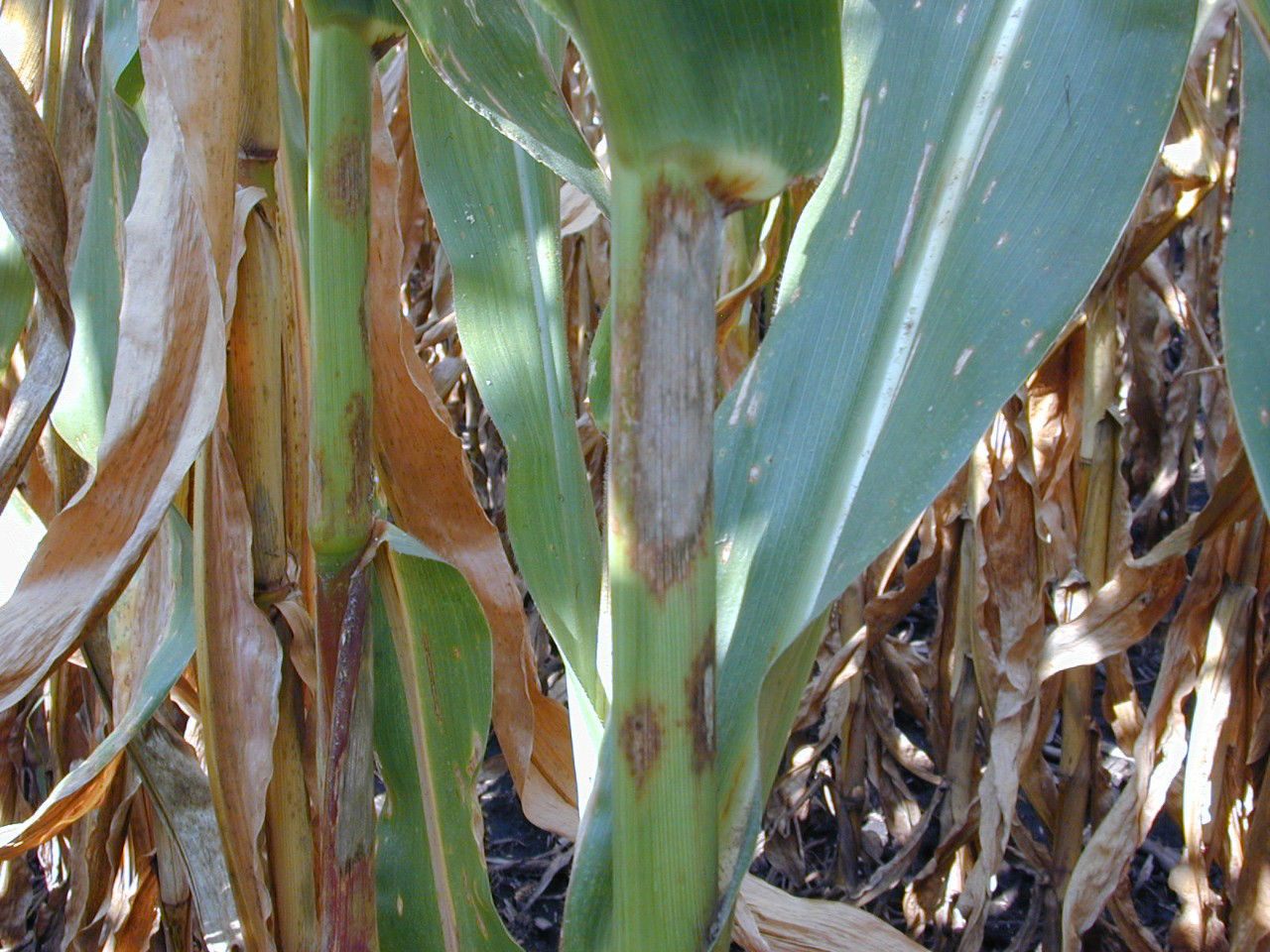3 READ-TIME
Purple Corn Seedlings
May 31, 2021
- Purple corn seedlings are caused by an accumulation of anthocyanin pigment.
- Genetics, environmental stress, root injury, nutrient deficiencies, hail, and other factors can cause anthocyanin pigment to accumulate in tissues.
- Purpling usually decreases as environmental and growing conditions improve.
- There is minimal, if any, impact on yield potential unless long-lasting stress or injury exists.
The purple colouration in corn, other crops, and fruits is caused by an accumulation of anthocyanin pigment. Purple grapes, red cabbage, plums, autumn leaves, and other reddish-purple fruits and vegetables owe their color to anthocyanin. Corn plants can have varying degrees of purpling anytime during the growing season because of genetics, environmental stress, insect injury, nutrient deficiencies, hail, and other factors.
Purple corn seedlings can be quite striking because of the purple cast across a field. Under most situations the coloration is cosmetic, decreases over time, and impact on potential yield is negligible.4 Longer lasting purpling can exist when plants are under stress or sustain root injury. The severity of the stress or injury may reduce yield potential.4
Figure 1. Young corn plant showing symptoms of phosphorus deficiency. AEM Phosphorus Deficiency - Early Growth Stage 2021021002.jpg (Bayer Owned, Erika Parker)
Purpling Causes
Genetics: Some corn products, because of their genetic background, have increased levels of anthocyanin and can be very purple as seedlings.
Phosphorus deficiency: Phosphorus (P) is a non-mobile nutrient and can be unavailable to seedling roots, particularly when early growing conditions are cool and wet (Figure 1). Under these conditions, seedling root growth can be slow which increases the seedling’s time without P. Generally, as environmental conditions improve, new root growth reaches available P and with P absorption, the purple colouration decreases. Unless there is a true P deficiency within the field, there is generally little if any yield loss associated with seedling P deficiency.
It is important to consider soil pH as P becomes increasingly unavailable when the pH is below 5.5 and higher than 7.3. Plants that are growing under these pH conditions can have purpling throughout the growing season.1 With restricted P uptake, yield potential can be reduced.
Compacted soil: Compacted soil can create a barrier for seedling roots. This may be a result of planting into soil that is too wet which can cause the seed furrow to have a hard wall and bottom that seedling roots cannot penetrate to reach water and P (Figure 2). Compaction from tillage or wheel traffic can also be a factor. The potential for yield reduction exists if the seedlings are unable to establish an efficient and productive root system.
Figure 2. Restricted root growth has resulted in purpling because the seedling is unable to absorb phosphorus. AEM Floppy Corn Syndrome - Plant2020040803
Root injury: Seedlings with roots damaged by insects such as white grubs and grape colaspis or restricted because of fertilizer or chemical injury can become purple because of the inability to reach P (Figure 3). The longevity of the purpling and extent of any associated reduction in yield potential is dependent on the extent of the damage and the occurrence of favourable environmental growing conditions for root regrowth.
Figure 3. Restricted roots from an ALS herbicide is causing plant to show purpling. Bayer owned picture, provided by Randy McElroy. Needs uploaded to AEM
Cool temperatures: Cool temperatures (4.4 to 10°C) can reduce the plant’s ability to metabolize sugars created through photosynthesis.3,4 This scenario can cause the sugars to remain in the leaves instead being redistributed throughout the plant. Some anthocyanin genes are cold induced; therefore, cold temperatures can turn these genes on and cause purpling to occur.2
Disease: Purpling can be caused by diseases that affect the root or plant vascular system. Root diseases, if they don’t kill the seedling quickly, can cause purpling as they try to grow under the stress of a diminished root system. Vascular diseases such as Stewart’s bacterial wilt, which is transmitted by flea beetle feeding, can cause the plant to become stunted and purple.
Purple plants can be seen beyond seedling stage because of various factors.
- Phosphorus deficiency can be apparent because of compacted or injured roots.
- Hard, droughty soils which can result in P deficiency symptoms or reduce the plant’s ability to metabolize photosynthetic sugars.
- Diminished ear set caused by drought or other factors can cause sugars that would have been distributed to developing kernels to remain in the leaves and stalk.
- Stalks injured by insects such as European corn borer, hail, or wind can destroy the plant’s ability to redistribute sugars and cause the stalk, husk, or leaves to become purple (Figure 4). Often, a broken leaf can become purple because the sugars are unable to move beyond the break.
- Purple leaf sheath occurs when dust, pollen, and other material lodge behind the sheath and deteriorates causing the sheath to turn purple; however, the stalk remains green. This is a cosmetic situation with no impact on yield potential (Figure 5).
- Disease can cause the deterioration of leaf tissue and/or vascular stalk tissues that in interrupt the movement of plant sugars.
Figure 4. Hail damaged plant showing signs of purpling because plant sugar movement is restricted at the point of stalk breakage. Bayer owned picture. Needs uploaded to AEM. 2021052516
Figure 5. Purple leaf sheath. Purple leaf Sheath_AEM cq5dam.web.1280.1280
Sources
1Busman, L., Lamb, J., Randall, G., Rehm, G., and Schmitt, M. 2002 (Reviewed 2009). The nature of phosphorus in soils. Nutrient Management. University of Minnesota. http://apps.extension.umn.edu/agriculture/nutrient-management/phosphorus/the-nature-of-phosphorus/.
2Christie, P.J., Alfenito, M.R., and Walbot, V. 1994. Impact of low– temperature stress on general phenylpropanoid and anthocyanin pathways: Enhancement of transcript abundance and anthocyanin pigmentation in maize seedlings. Planta. 194:541-549.
3Ciampitti, I. 2020. Purple color in corn seedlings: Cause for concern? Agronomy eUpdates. Kansas State University. https://eupdate.agronomy.ksu.edu/article_new/purple-color-in-corn-seedlings-cause-for-concern-390-1
4Nielsen, R.L. 2017. Prevalent purple plants perennially puzzle producers. Corny News Network. Purdue University. http://www.kingcorn.org/news/timeless/PurpleCorn.html
Legal Statements
Performance may vary from location to location and from year to year, as local growing, soil and weather conditions may vary. Growers should evaluate data from multiple locations and years whenever possible and should consider the impacts of these conditions on the grower’s fields.
Bayer and Bayer Cross are registered trademarks of Bayer Group. Used under license. All other trademarks are the property of their respective owners. ©2021 Bayer Group. All rights reserved. 4010_S6_CA





